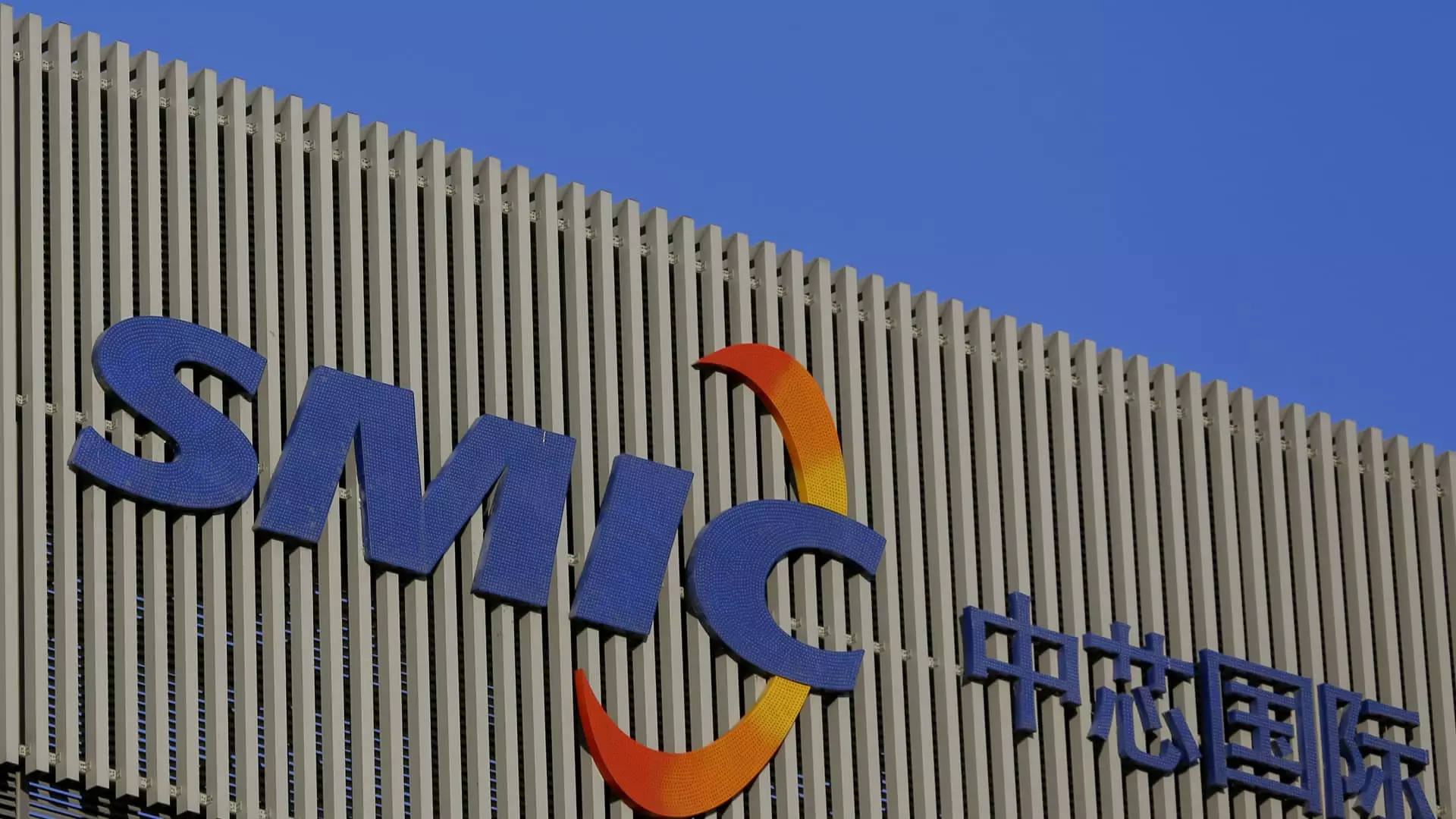Semiconductor Manufacturing International Corporation (SMIC) holds the title of China’s largest contract chip manufacturer, a significant player in an industry that is becoming critical to both economic growth and global politics. Recently, SMIC experienced a rocky moment as its shares plummeted nearly 7% following disappointing first-quarter earnings. On the surface, reporting a revenue spike of 28% year-on-year to $2.24 billion could seem like a success. But, a closer look reveals that this number lagged behind market expectations, which had anticipated $2.34 billion. This discrepancy represents more than just an earnings miss; it is a troubling signal of what lies beneath the surface in China’s semiconductor ambitions.
Amidst the larger narrative of SMIC’s growth, a staggering 162% increase in profit attributable to shareholders also emerged as a bright spot, reaching $188 million. However, the fact that even this impressive growth fell short of both SMIC’s own forecasts and analyst expectations creates a disquieting atmosphere within the company. This shortfall raises questions about the viability of SMIC as a long-term player in a landscape brimming with technological challenges and geopolitical tensions.
The Geopolitical Shadow Over Semiconductor Supply Chains
The broader context is equally alarming. SMIC’s turnaround is closely tied to the tumultuous geopolitical landscape, with the United States imposing stringent export controls that effectively curtail China’s access to advanced semiconductor technologies. The implications here extend beyond mere market competition; they speak to national security and technological sovereignty. As SMIC grapples with the repercussions of these restrictions, its ability to innovate and develop state-of-the-art chips is severely limited.
While it is commendable that the company reported increased wafer shipments by 15% from the previous quarter, this achievement cannot obscure the harsh realities the company faces in ramping up production for advanced chips. These chips are increasingly crucial for applications across AI, cloud computing, and consumer electronics, and SMIC’s reliance on older-generation semiconductors places it at a severe disadvantage in a swiftly evolving tech landscape.
R&D Investment: A Cause for Concern?
Adding to the anxiety, there are troubling signs surrounding SMIC’s commitment to research and development. Their R&D spending decreased significantly to $148.9 million from $217 million in the previous quarter. This decline is disheartening, particularly when viewed against the backdrop of increased demand for advanced technology. In a world where the semiconductor industry is driven by rapid innovation and technological advancements, cutting back on R&D funding could signify a long-term strategy that is both unsustainable and detrimental to future growth.
Analysts have pointed out that SMIC must aggressively pursue capacity expansion to meet market demands. However, the current strategy, highlighted by cuts in R&D funding, raises questions about its long-term vision. Reducing investment in research could result in missed opportunities and stifle innovation, significantly hampering SMIC’s position in both domestic and global markets.
Domestic Demand Boosts Revenue Despite Challenges
Despite these challenges, there are signs of strong domestic demand fueling SMIC’s revenue across various sectors. The company has benefited from government policies supporting local semiconductor production, including domestic consumer electronics campaigns. An impressive capacity utilization rate of 89.6% suggests that local industries are thirsty for semiconductors, illustrating a shift in the supply chain that favors domestic production over foreign imports.
However, the question remains: how sustainable is this kind of demand? If the geopolitical landscape shifts again or if a global recession pulls down consumer spending, SMIC may find its local advantage evaporating rapidly. Past patterns show that relying heavily on domestic markets can be a double-edged sword, as downturns can occur at any time, wreaking havoc on growth and production stability.
The Future Landscape: Navigating Uncertainty
As the semiconductor war heats up, the dynamics surrounding SMIC showcase a volatile intersection of technology, investment, and international relations. The company is clearly at a crossroads, where its decisions will have profound implications not only for its future but also for the broader narrative of China’s technological independence. If SMIC cannot bolster its advanced chip manufacturing capabilities due to external restrictions and internal resource allocations, its ambitions may stall.
The company has indeed made strides — evidenced by its success in supplying chips for products like Huawei’s Mate 60 Pro. Nevertheless, unless SMIC re-evaluates its strategy and enhances its focus on cutting-edge technology, the long-term prospects remain clouded. The drumming beat of overseas pressures and local expectations will continue to resonate, and only time will tell if SMIC can adapt and thrive amid such overwhelming challenges.

